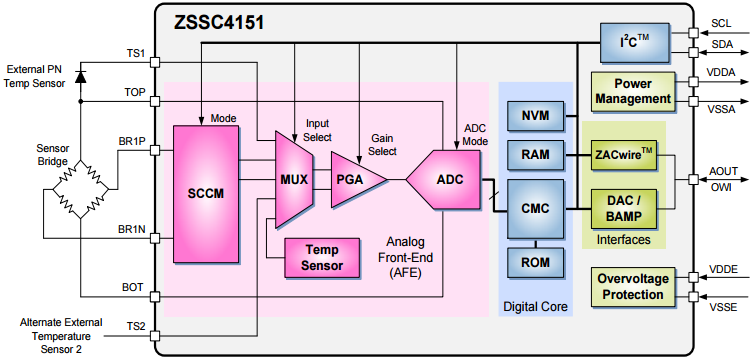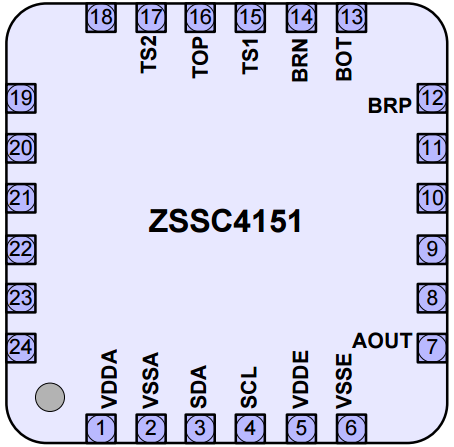Package Information
| Pkg. Type: | WAFER |
| Pkg. Code: | DICEW |
| Lead Count (#): | |
| Pkg. Dimensions (mm): | 0.0 x 0.0 x 0.0 |
| Pitch (mm): |
Environmental & Export Classifications
| Moisture Sensitivity Level (MSL) | 1 |
| Pb (Lead) Free | Yes |
| ECCN (US) | |
| HTS (US) |
Product Attributes
| Lead Count (#) | 0 |
| Carrier Type | WFP |
| Moisture Sensitivity Level (MSL) | 1 |
| Qty. per Reel (#) | 0 |
| Pitch (mm) | 0.0 |
| Pkg. Dimensions (mm) | 0.0 x 0.0 x 0.0 |
| Sample Rate Max (KHz) | 3.40 |
| Qty. per Carrier (#) | 0 |
| Pb (Lead) Free | Yes |
| Pb Free Category | e3 Sn |
| Temp. Range (°C) | -40 to 150°C |
| Price (USD) | 2.19835 |
| Country of Wafer Fabrication | Taiwan |
| Adj. Analog Gain | 1 - 200 |
| Automotive Qual. | Yes |
| Budgetary Price (100u) (USD) | 2.53 |
| Budgetary Price (1ku) (USD) | 2.53 |
| Budgetary Price (1u) (USD) | 2.53 |
| Budgetary Price Breaks | 1 |
| Budgetary Prices | 2.53,2.53,2.53 |
| Function | Resistive SSC |
| Input Type | Single-bridge |
| Interface | Ratiometric Voltage, ZACwire™, I2C, Switch Output |
| Length (mm) | 0.0 |
| MOQ | 50 |
| Pkg. Type | WAFER |
| Published | No |
| Qualification Level | Automotive |
| Requires Terms and Conditions | Does not require acceptance of Terms and Conditions |
| Resolution (bits) | 18 |
| Supply Voltage (V) | 4.5 - 5.5 |
| Tape & Reel | No |
| Thickness (mm) | 0.0 |
| Width (mm) | 0.0 |
Resources for ZSSC4151
Description
The ZSSC4151 is a CMOS integrated circuit for highly accurate amplification and sensor-specific correction of resistive bridge sensor signals. Digital compensation of sensor offset, sensitivity, temperature drift, and non-linearity is accomplished via an internal 16-bit RISC microcontroller running a correction algorithm, with calibration coefficients stored in an integrated EEPROM. The ZSSC4151 is adjustable to nearly all resistive bridge sensor types. Measured values are provided at the analog voltage output and at the optional digital I2C or the ZACwire™ interface, also referred to as the one-wire interface (OWI). The digital interfaces can be used for a simple PC-controlled calibration procedure to program a set of calibration coefficients into an on-chip EEPROM. The ZSSC4151 and the calibration equipment communicate digitally, so the noise sensitivity is greatly reduced. Digital calibration helps keep assembly cost low as no trimming by external devices or lasers is needed.

